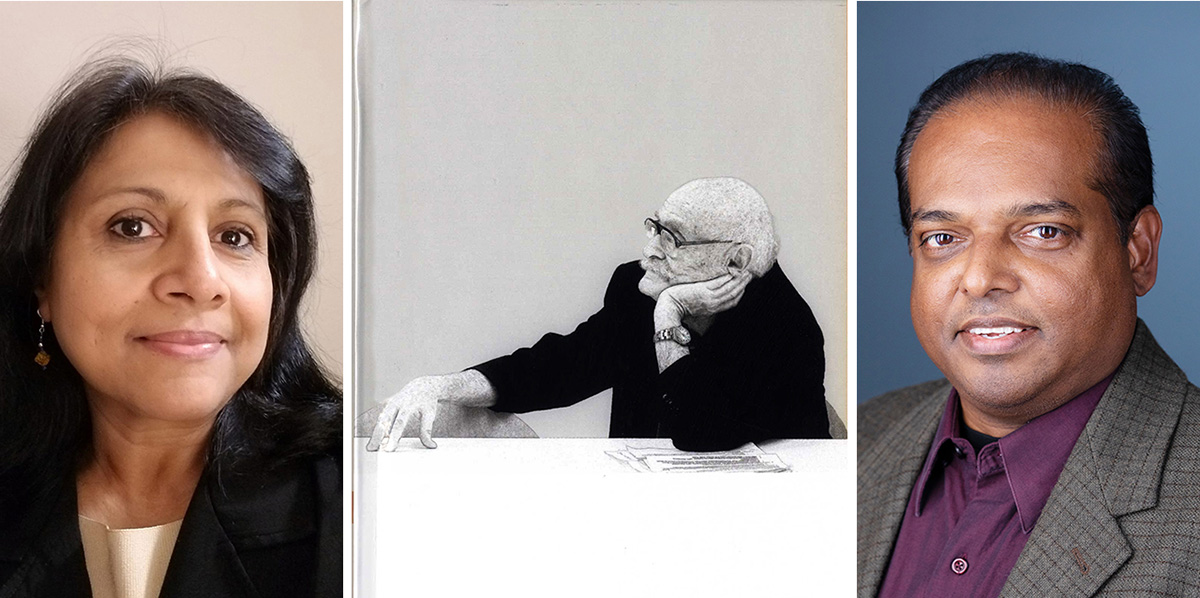Disciples pay tribute to pioneer of human-centered architecture

LAWRENCE – Amos Rapoport’s 1969 book, “House Form and Culture," proved groundbreaking in understanding the important influence of cultural factors in shaping the built environments in different communities around the world
Rapoport, now age 95, dedicated his subsequent career to expanding upon the theories that he literally sketched out there more than half a century ago.
Two of his former students, now professors at the University of Kansas, have co-written and co-edited a new book, “Theorizing Built Form and Culture: The Legacy of Amos Rapoport” (Routledge), which is both a tribute to their mentor and an explication of his theories.
Kapila Silva and Nisha Fernando studied for their doctorates with Rapoport at the University of Wisconsin-Milwaukee and remain in touch with him. Silva holds the titles of professor and associate dean of the KU School of Architecture & Design, while Fernando is an associate professor and directs the interior architecture degree program.
They correspond with their former mentor “mostly through letters,” Silva said. “He doesn’t use a computer. Occasionally, he will text message.”
The professors said that Rapoport’s influence on their field is ongoing and worthy of celebration at this time. He is a pioneer of the field of “environment-behavior studies,” or EBS, which focuses on the study of the mutual interaction between people and their environments and human-centered environmental design. Development of the field of EBS is one of his most important contributions, they wrote. Employing EBS, Rapoport attempts to show, using diagrams and other proofs, how human culture affects the built environment and vice versa in an ongoing dialectic.
“It could be called doing architecture in a human-centered way," Silva said. “Rather than the architect designing something formally beautiful, they should be thinking, ‘How am I going to design it for the people?’ And that means you have to understand how people relate themselves to buildings, how they live in the buildings, how they use buildings, what are the factors and mechanisms that connect the physical environment to a human being?”
“One of the most important things about his work is the idea that architecture should be seen through an interdisciplinary perspective,” Fernando said. “He borrows a lot from sociology, anthropology, psychology, cognitive sciences and so on. His work demonstrates how we can learn from such interdisciplinary knowledge as architects.”
Following EBS to its logical ends, the author said, means the goal of architects, urban planners and other designers should be to create what Rapoport calls “supportive environments.”
“Supportive environments are based on really understanding who we are designing for and designing to support what their needs are,” Silva said. “It may come from culture. It may come from certain psychological things; it doesn't matter. Supportive environments are actually another way of saying ‘good architecture.’ This should be your goal ... human-centered design.”
Another important Rapoportian concept, according to Silva and Fernando, is his idea of an interlocking “system of settings and activities” that allows one to properly analyze how people use and relate to the built environment.
Fernando’s chapter, titled “Sensory experiences as cultural place identity: two case studies,” analyzes and contrasts two unique streetscapes that closely reflect their cultural environments: Fernando’s hometown of Kandy, Sri Lanka, whose sights, smells and sounds are transformed each year by the religious celebrations of the Buddhist relic held at the famous Temple of the Tooth, and the long-standing Chinatown on New York’s Manhattan island.
Silva’s chapter, titled “Exploring heritage from an environment–behavior studies perspective,” applies Rapoport’s ideas to the preservation of World Heritage sites by the United Nations Educational, Scientific and Cultural Organization.
The author said they were pleased to present Rapoport with a copy of the book on his 95th birthday in March. The book is aptly dedicated to him.
“The importance is that he has been doing this since the 1960s,” Silva said. “His work has been instrumental in decolonizing the Euro-centric thinking in environmental design. Therefore, we wanted to say that what he has discussed is still applicable, and it is going to be applicable.
“The introduction to this volume is a very tight summary of his key ideas. And the rest of the chapters are showing how those ideas can be applicable in different disciplines, various locations and diverse cultures. The book demonstrates the future validity and relevance of Rapoport’s intellectual legacy.”